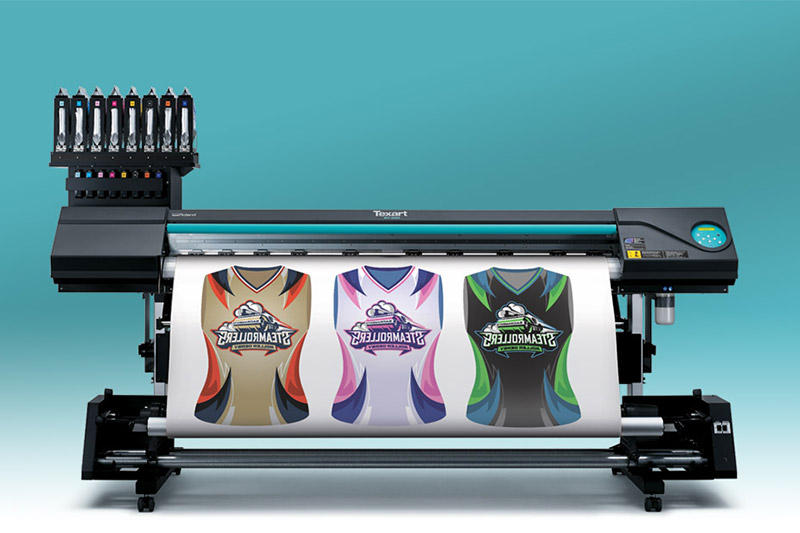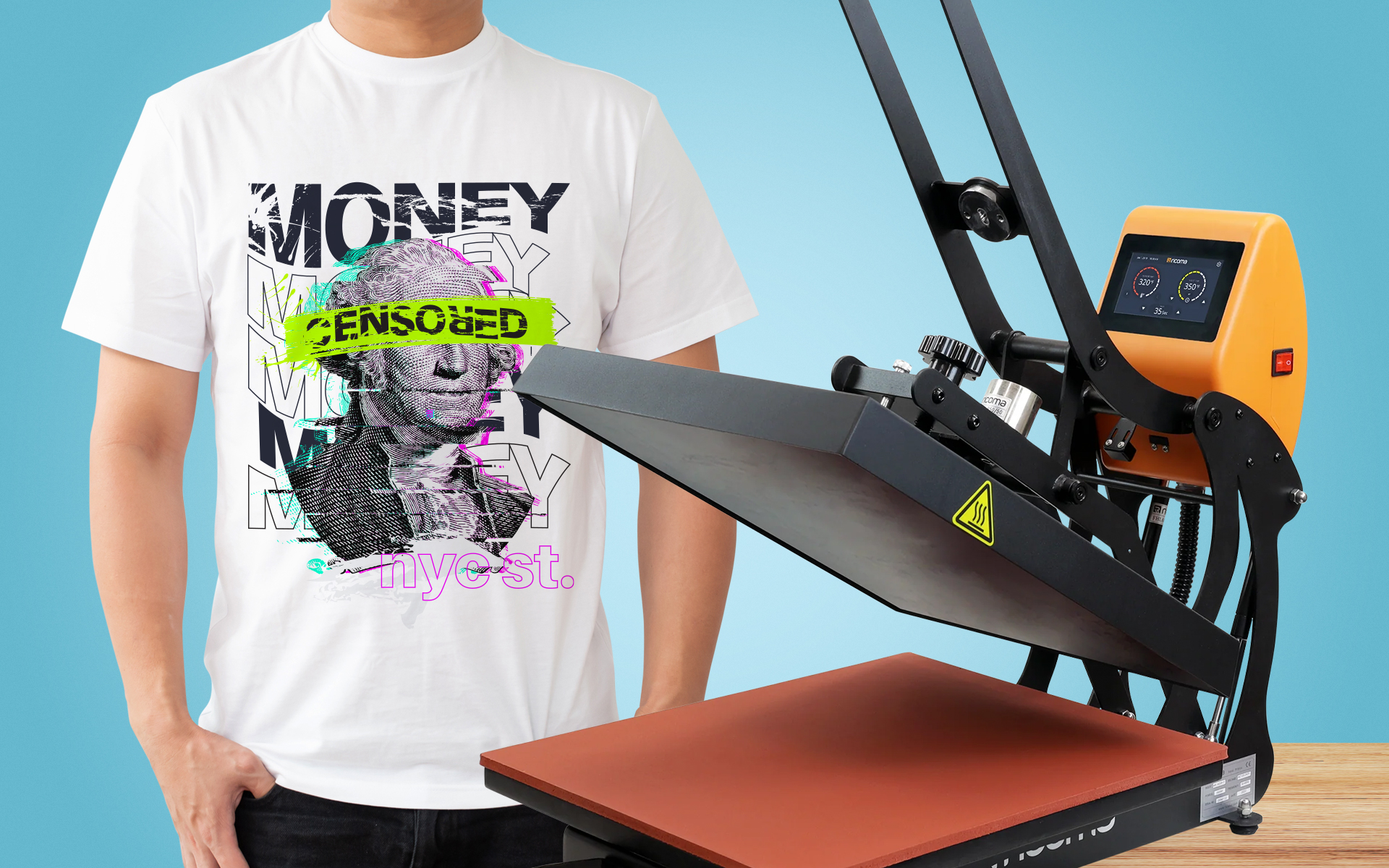The Best Guide to Sublimation Printing for Personalized Clothing
The Best Guide to Sublimation Printing for Personalized Clothing
Blog Article
A Comprehensive Guide to the Different Sorts Of Fabric Printing Techniques
Each technique, from the careful workmanship of block printing to the fast efficiency of screen printing, serves distinct purposes and supplies distinct advantages. Digital printing's flexibility and environmental consciousness stand in raw contrast to the quick modification of heat transfer printing.
Block Printing
Block Printing, one of the oldest techniques of textile decor, has a rich history that dates back to old civilizations. The process entails carving complex designs into wood blocks, which are after that dipped in color and pressed onto fabric to create patterns.
The precision and workmanship associated with block printing make it a labor-intensive process, however it likewise permits for a high degree of modification. Craftsmens can create one-of-a-kind patterns by incorporating different blocks or differing the application of color. This versatility has added to the enduring appeal of block printing in both contemporary and typical fabric design.
Block printing is especially valued for its visual high qualities, including the mild variants in pattern and shade that arise from the hand-printing procedure. These imperfections offer an one-of-a-kind personality to every item, distinguishing it from mass-produced textiles. Regardless of advancements in contemporary printing technologies, block printing stays a treasured technique, commemorated for its historical value and creative worth.
Display Printing
Screen printing, another prominent textile design technique, has actually transformed the market with its efficiency and flexibility. This approach includes creating a pattern, recognized as a display, and using it to apply layers of ink on the printing surface area. Each shade in the design calls for a separate screen, which permits complex and vibrant multi-colored prints.

One of the key advantages of screen printing is its flexibility to various kinds of textiles, including cotton, polyester, and blends. This technique is especially appropriate for large-volume orders as a result of its cost-effectiveness and rate. The longevity of the prints is one more considerable benefit, as the ink bonds well with the fabric, guaranteeing resilient layouts that endure multiple cleans.
As soon as dried, the layout is moved onto the emulsion-coated screen utilizing a UV light source. Ink is then pressed via the stencil onto the material utilizing a squeegee.
Screen printing is extensively made use of in the apparel industry, marketing products, and personalized apparel. Its ability for top notch, comprehensive prints safeguards its condition as a keystone technique in fabric printing.
Digital Printing
Digital printing has actually swiftly become an advanced have a peek at this site strategy in the fabric market, leveraging advanced modern technology to produce high-resolution designs straight onto textile. Unlike standard techniques, electronic printing employs inkjet printers to deposit pigment or dye-based inks onto fabrics, enabling lively and elaborate patterns with an amazing level of information and shade accuracy.
One of the primary advantages of digital printing is its adaptability. This technique permits on-demand printing, which dramatically minimizes waste and decreases stock expenses. Furthermore, it sustains short runs and personalized designs, making it ideal for custom jobs and limited-edition collections. The removal of screens and various other arrangement demands additionally enhances performance, minimizing production time and labor expenses.
Additionally, digital printing is environmentally pleasant. DTF printing. It makes use of water-based inks and requires less water and energy contrasted to traditional methods, lining up with lasting techniques. The precision of electronic printing likewise permits making use of a broader array of textiles, including cotton, silk, polyester, and blends, making sure flexibility throughout different applications
Warmth Transfer Printing
Just how does warmth transfer printing reinvent textile layout? Warmth transfer printing entails making use of warmth and stress to move a style from a particularly created paper onto textile.
Among the main benefits of heat transfer printing is its ability to generate high-quality, detailed photos quickly and successfully. It is particularly appropriate for little production runs and custom-made orders, making it a popular choice for customized garments and promotional items. In addition, this technique is functional, accommodating different sorts of fabrics consisting of cotton, polyester, and blends.
Moreover, warm transfer printing is reasonably affordable contrasted to various other techniques, as it requires minimal arrangement and lower initial investment - screen printing. This price, combined with its capability for producing dynamic, long lasting prints, emphasizes its crucial function in contemporary textile layout

Dye Sublimation Printing
Dye sublimation printing, an advanced fabric printing strategy, offers unrivaled vibrancy and longevity for styles on numerous synthetic fabrics. The published transfer paper is after that placed on the material, and both are subjected to high warmth and stress using a warmth press.
One of the essential benefits of dye sublimation printing is its capacity to create continuous-tone prints with a knockout post vivid shades and detailed information. Unlike various other printing techniques, the color ends up being part of the textile instead than resting on top of it, resulting in a breathable and soft finish.
Conclusion
In summary, fabric printing strategies each offer special advantages customized to numerous requirements and applications. Block printing is revered for its artisanal high quality, while screen printing is useful for high-volume production. Digital printing gives adaptability and environmental advantages, whereas warm transfer printing is perfect for quick customization. Dye sublimation printing creates vivid, sturdy layouts on artificial materials. The diversity have a peek at this website and advancement within these approaches highlight the dynamic and developing nature of the fabric printing industry.
Each approach, from the meticulous workmanship of block printing to the fast performance of screen printing, serves special functions and uses distinctive benefits. Digital printing's flexibility and ecological consciousness stand in raw comparison to the swift modification of warmth transfer printing. Regardless of breakthroughs in modern printing modern technologies, block printing remains a valued method, commemorated for its historical relevance and artistic worth.
Dye sublimation printing, a sophisticated textile printing method, provides unrivaled vibrancy and long life for layouts on various synthetic fabrics. Digital printing offers versatility and ecological advantages, whereas warm transfer printing is perfect for rapid modification.
Report this page